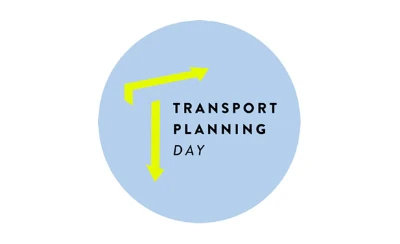Lynda Addison, new Chair of TPS, set out her vision for the Society over the next few years to an informal gathering of TPS stakeholder members on Thursday 7th September at One Great George Street. She set out key areas in which she was pushing for progress, in particular to ensure that TPS gained greater public recognition of its work and that its voice was more frequently heard by decision makers at local and national level. To do this she wanted to engage with all TPS members to define what transport planning and transport planners should be like in the 21st century, given the rapid changes that were taking place across transport and society as a whole. There also needed to be a wider dialogue about what transport planning is, what it could be, and where it was going. This would help define what skills would be needed to take it forward. A key goal would be to set out a clear set of principles which should underpin all transport planning work. The close TPS involvement with the annual Transport Practitioners Meeting (TPM) had been an opportunity to launch the debate and she wanted to ensure that momentum was maintained. The Board had agreed to take this forward as a priority for the coming year.
Another key aim would be to reach out to transport planners and grow membership and that meant TPS being more effective in its activities – working closely with the supporting institutions, ICE, CIHT, CILT, and RTPI. An example of this was a letter to the DfT and DCLG submitted jointly with CfBT/CIHT/FIT about changes to the National Planning Policy Framework (NPPF). There would be a joint meeting with the DfT within a week and this was a window of opportunity for improvements to the NPPF. The general view is that local authorities are too focused on protecting and promoting highways and do not take account sufficiently of the need for environmentally sustainable development. This will be key in delivering the housing numbers that the Government is targeting.
Other ideas included setting up a Transport Planning Day with the range of bodies involved directly and indirectly in transport, would members support this and how should it organised? This meeting was the start of a process of stimulating debate and engaging with all those who worked in or were affected by transport planning. Above all we needed to get the message across about what we do and the benefits that can flow to everyone.
Keith Buchan, TPS Director for Skills then briefly introduced the changes to the TPS Professional development Scheme (PDS). The process had taken just over a year and had involved widespread consultation, including trainees and mentors. There had been an influx of graduate trainees due to the recovery in transport planning. They were a great group of people and they needed to be sustained on the scheme and encouraged through to completion. There would be no change to the Knowledge requirements of the scheme – the Learning bit – and this meant completion would still count as fulfilling the Knowledge requirements for TPP. Some Experience in different areas would still be needed, plus Proficiency in data work. Overall the scheme should be achievable in 2-3 years rather than 5.
As well as sustaining membership of the scheme the new structure would make the focus on graduate training more transparent. This in turn creates a bigger space between completing PDS and applying for TPP but should lead to improved support after PDS completion.
For the coming year there would be close working with CIHT to raise the TPP profile, ensure that the transport planning apprenticeship was maintained, and help develop a degree apprenticeship.
During the discussion it was said that transport planning was hard to define, partly because it was multi-disciplinary, it provided the “glue” between many other disciplines and needed to assert itself in this role. There was confirmation from stakeholders that the current intake of graduates contained some “brilliant people” and that it was important to support and get the best out of the new pool of talent. Ideas included:
- More events for young professionals
- Linking up with the idea of STEM ambassadors – where did transport fit in?
- Getting into schools – there was no first degree in transport planning so indicating which degree options could be taken would help
- Preparing more useful information to reach out to students before they chose a university or apprenticeship
- Continuing this into Universities by engaging with students as they started their degrees and identify degree modules in transport, use alumni to give talks to students
- Engaging with further institutions, for example RIBA and RICS, to explain our role and how it would complement theirs
- Stressing the importance of a multi-disciplinary environment in everything we do
- Raising the profile nationally would be challenging – more regional events may help
- Examples of good practice were needed, the multi-modal nature of much work should be emphasised
- The problem solving (within different budgets!) and option generation capacity of transport planners needed to be explained
The Chair concluded the discussion by saying that the conversation had started and she intended to target next year’s TPM as a point when she could summarise where we had got to in terms of setting our principles and engaging with the transport planners. The programme was ambitious and resources were, as always, limited and she encouraged everyone not just to get in touch but to get involved. She was sure that the lively conversations would continue.
If you would like to comment on these proposals please email us at info@tps.org.uk
Photo - Lynda Addison, TPS Chair and Keith Buchan, TPS Skills Director presenting at the 2017 Annual Stakeholder Forum














